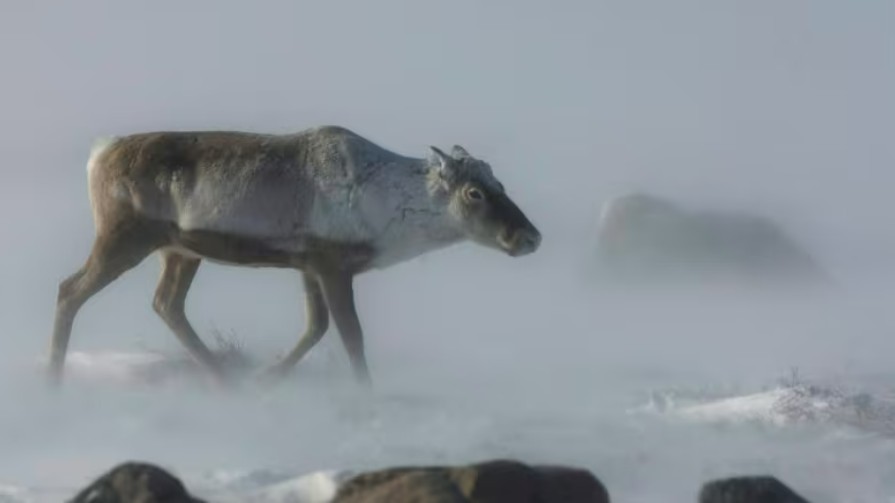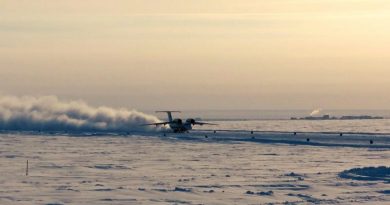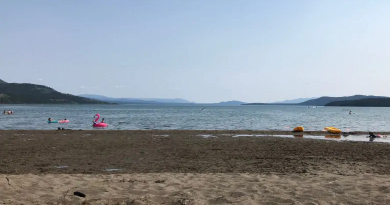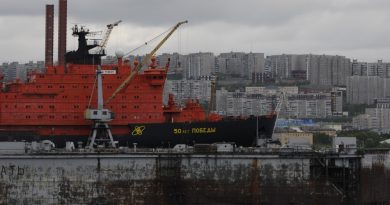Nunavut flips stance on caribou protection again, now supports development ban on calving grounds

The government of Nunavut has once again flipped its position on resource development on caribou calving grounds.
In a submission to the Nunavut Planning Commission (NPC) on the 2021 draft Nunavut land use plan, the territorial government now supports a “prohibition of development within calving grounds and key access corridors, with seasonal restrictions on activities in post-calving grounds.”
“The recommendations supersede previous recommendations and are to be taken as the GN [Government of Nunavut] position on the matter until otherwise amended,” the document reads.
The major policy reversal comes on the heels of the NPC’s fifth and final public hearings on the land use plan, where stakeholders and community members stressed the need for protecting calving grounds.
“It was important as a government that we base our position on the concerns and suggestions that are brought forward at those public hearings,” said Nunavut Premier P.J. Akeeagok, who attended several days of hearings, listening to testimony.
“So that was really the basis of the shift in position.”
The government last switched its stance in 2016, where it went from wanting to ban development on caribou calving grounds, to reviewing proposed developments on a case-by-case basis. The controversial decision came only four days ahead of an NPC workshop on caribou, in a manner where the environment department’s views were suppressed in material presented to cabinet which informed the decision.
“I think we’ve all talked about how important mining plays in our communities. It provides so much in terms of employment opportunities, contracting opportunities,” Akeeagok said, referring to the government’s Katujjiluta mandate.

“From the viewpoint of our government, we’ve been really clear that we support both areas. And with that in mind, the submission as a government, there’s a lot of things we consider.”
‘We’re not farmers’
The new position does leave the door open to development on post-calving grounds, migratory routes and sea ice crossings — for which the government is proposing seasonal restrictions.
“Calving grounds [are] very important for the caribou,” said Jimmy Ullikatalik, the manager of the Spence Bay Hunters and Trappers Association in Taloyoak, who welcomed the government’s new position.
“We always said that we’re not farmers. We’re hunters and gatherers. So we need caribou and wildlife. That’s our livelihood and our way of life. We need to protect our livestock.”
Earl Evans, the chair of the Beverly and Qamanirjuaq Caribou Management Board, added his group isn’t opposed to development in the territory, provided it be done “in a safe respectable way.”
He said the GN’s change in position will have a “tremendous impact” considering the government’s clout on the land use plan.
“I think the government can see the value to the caribou to the people, to their culture and to their livelihood and their overall health,” Evans said.
Data gap on Baffin Island caribou herd
The GN’s new recommendation only applies to areas in which the GN itself has data on calving grounds, although in its NPC submission it said it recognizes the knowledge of other parties.
In particular, the GN relied on caribou collaring to identify calving grounds — according to environmental experts who spoke to CBC News on background. However, the GN doesn’t have data in the Qikiqtaaluk, in part because of community opposition to collaring the depleted herd, the experts said.
“The department of environment does understand we need more data from the Qikiqtaaluk,” said Environment Minister Joanna Quassa, who was handed the portfolio in a cabinet shuffle nearly five weeks after the GN’s submission to the NPC, following the resignation of Craig Simailak.
She said the department is looking to work with local hunters and trappers organizations to acquire more data.
“Since Inuit and HTOs [hunter and trapper organizations] know quite a bit about these places, that would be a wonderful place to start with,” Quassa said.
‘Confusing and inconsistent’
The GN also submitted comments to written submissions to the NPC two weeks after its final submission paper.
In it, some of the GN’s recommendations run at odds with those of Nunavut Tunngavik, the Kivalliq Inuit Association, the Kitikmeot Inuit Association, and the Nunavut and N.W.T. Chamber of Mines.
Notably, the Inuit organizations backed mobile protections measures — in line with measures taken in the Northwest Territories to protect the Bathurst caribou herd, where a conservation area follows the herd and imposes a hunting ban.
“These measures are experimental, untested, and unproven,” the GN’s comments read. “Despite what some parties are claiming, area-based protections are the currently accepted mechanism to protect caribou and caribou habitat from development impacts.”
Though later in the document, the GN expressed its support of the Kivalliq Inuit Association determining its own designations on Inuit-owned land in the Kivalliq — which calls for mobile measures.
The Nunavut Chamber of Mines declined CBC’s request for an interview. In a statement, chamber executive director Tom Hoefer criticized the GN’s position.
“They demonstrate a total misunderstanding what mobile caribou protection measures are. They state they are related to mobile equipment that can be moved if caribou appear. That is flatly wrong and has nothing to do with mobile equipment,” Hoefer wrote.
“[The] GN has fielded an erroneous complaint about this alternative method of protection based on their misunderstanding of the term. Their position on caribou is confusing and inconsistent.”
Asked whether the GN has contradicted itself by taking a new position based on community feedback at the NPC hearings, while simultaneously arguing against submissions made by Inuit organizations, Quassa said each region may have different views.
“There are some things that are done, which could be supported, but afterwards realizing that that is not the best approach,” Quassa said.
“There are things that every department or anything that is being used, that you’ve learned from, and on top of that when people are speaking loudly, that is the approach that should not be taken. So, sometimes you need to rethink your ways on how you can do your research.”
Related stories from around the North:
Canada: Northern Indigenous Guardians initiatives among those to share in Ottawa funding, CBC News
Finland: Miners hunting for metals to battery cars threaten Finland’s Sámi reindeer herders’ homeland, Yle News
Greenland: Greenland issues new exploration, prospecting licences to Anglo American, Eye on the Arctic
Norway: Minister downplays environmental impact of planned mine in Arctic Norway, The Independent Barents Observer
Sweden: The Arctic Railway – Building a future or destroying a culture?, Eye on the Arctic
United States: Biden, Trudeau agree to ‘safeguard’ caribou calving grounds in Alaska refuge, CBC News



